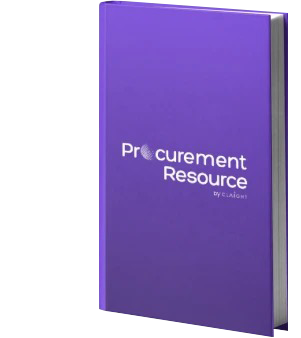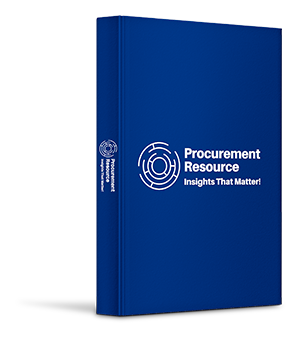Reports

Global Dark Chocolate Market: Country Overview; Recent Events; Value Chain Analysis; Production Process; Price Analysis; Indicator Analysis; Market Dynamics: Drivers & Constraints, Innovations & Trends, SWOT Analysis, Porter’s Five Forces; Industry Best Practices: Sourcing Strategy, Procurement Model, Key Factors Influencing the Quotation; Key Supplier Analysis, 2024-2032
Dark Chocolate Market by Regional Category Spend, Price Analysis, Key Demand and Price Indicators, and Best Buying Practices
The global Dark Chocolate market reached a value of about USD 55.5 billion in 2021. The industry is projected to grow at a CAGR of around 4.9% in the forecast period of 2022-2027 to reach a value of about USD 74.9 billion by 2027.
The global dark chocolate market gives a comprehensive analysis of the industry including key segments, trends, drivers, restraints, the competitive landscape, and other essential market aspects. Dark chocolate is popular among consumers owing to its various health benefits. The widespread health and wellness movement is driving its industry. Its addition in different food and beverage products further contributes to the market's growth. In the industry report, the critical demand indicator is the highest category spender by region—Europe (Western Europe).
Industry Definition and Segmentation
Dark chocolate is a type of chocolate that contains cocoa solids and cocoa butter but excludes the milk or butter present in milk chocolate. It is also known as bitter chocolate as it does not have any added sweetener. It is high in nutrients that are beneficial for the health as it is produced from the cacao tree's seed and is one of the most significant sources of antioxidants available. The dark chocolate market comprises segments by distribution channel (supermarkets and hypermarkets, convenience stores, non-grocery retailers, others), region (North America, Europe, Asia Pacific, the Middle East, Africa, and South America). The European market holds a significant share in the bitter chocolate market owing to high consumption in the Western European region.
North America, Europe, Asia Pacific, Middle East & Africa, and South America Regions are Driving the Growth of the Industry
The significant region in the global dark chocolate market in North America, Europe, Asia Pacific, the Middle East, Africa, and South America, with Western Europe driving the sector due to increased demand for organic variety of it among consumers in the area, forcing brands to add natural and organic components in their goods. The rising health consciousness among people with increasing knowledge regarding the nutritional content in the product is driving the market's growth.
The consumption of the product offers benefits like protecting the brain from age-related stress and inflammation, both of which have a role in neurodegenerative diseases like Alzheimer's disease. It also helps in enhancing blood circulation to the brain, which improves the capacity to focus, improves memory, and reduces anxiety levels. As a result, there is a rising surge in demand for the product. The growing consumer preference for premium bitter chocolate that is more limited-edition seasonal chocolates is augmenting sales in the sector. Other factors such as a rise in disposable income, changing consumption patterns, a shift towards western sweets, etc., are furthering the industry's expansion.
At present most of the actions are focused on technical solutions to improve farming practices however the inherent problem at the base level is to deal with power and political economy, how the markets prices are decided, no negotiating power with the farmers, market absorption of international business and absence of transparency and responsibility of both government and companies.
Best Procurement Practices
The global dark chocolate market by Procurement Resource gives an in-depth analysis of the best buying practices followed by major global dark chocolate production and consuming regions across the globe, such as engagement models, contract terms, and buyer and supplier negotiation levers, among others.
Category Management Studies
Making chocolate starts with the collection of coca leaves from a jungle. Cocoa beans develop in pods from cocoa trees' trunks and branches. When the pods are ready, harvesters walk around the cocoa orchards with machetes, delicately hacking the pods off the trees. The cocoa pods are gathered into baskets and sent to a processing facility. Later, the cocoa beans are removed after they are split apart. Each pod can contain up to 50 cocoa beans.
The beans then go via a fermenting process. They're heated on huge, shallow pans or wrapped in giant banana leaves. After drying, the seeds are transported to chocolate producers. Production procedures vary depending on the many types of cocoa trees, but most facilities utilise comparable machinery to break down the cocoa beans into cocoa butter and chocolate. First, fermented, and dried cocoa beans will be winnowed and roasted to produce a roasted nib.
They'll be cooked and melted into chocolate liquor after that. Finally, producers mix chocolate liquor with sugar and milk to enhance flavour. The liquid chocolate will be kept or transferred to the moulding facility in tanks after the blending process, where it will be put into moulds for sale. Finally, the chocolates will be packed by wrapping and packaging equipment, and they will be ready to transport.
The Supermarket and Hypermarket Segment, Further Propelling the Procurement of Dark Chocolate
The supermarkets and hypermarkets category are leading the sales in the sector as it provides buyers with a wide range of brands to pick from, ranging from low-cost to high-end. Due to many brands available, ample shelf space, and regular price discounts in the markets, the industry is witnessing further growth.
The ease of accessibility and availability is furthering the development of the sector. Unsweetened chocolate has also become a popular component for baked foods, confectioneries, bar fillings, and drinks, among other things. As a result, the global dark chocolate market is likely to benefit from the rise of the food and beverage industry.
The regional markets for the industry can be divided into North America, South America, Europe, the Middle East and Africa, and the Asia Pacific.
Key Industry Players Mentioned in the Dark Chocolate Market
- Ferrero International
- Nestlé
- Mondelez International, Inc.
- Amul
- Ritter Sport
- The Hershey Company
- Others
Market Landscape
The major brands and manufacturers of the product are continuously expanding their range and targeting a new audience. The launches of new and innovative products with different ingredients and flavours positively impact the market. Various industry companies have made significant product advancements in response to shifting consumer tastes and preferences. Exciting advertisements and social media activities for promotional activities are creating new opportunities for key players.
Key Initiatives by Companies
- Amul Chocolate is giving competition to the packaging of overseas brands like Lindt or Hershey's and emphasising flavours, particularly dark chocolate.
1. Executive Summary
2. Dark Chocolate Market Snapshot
2.1. Dark Chocolate Market Outlook
2.2. Dark Chocolate Industry Analysis by Distribution Channel
2.2.1. Supermarkets and Hypermarkets
2.2.2. Convenience Stores
2.2.3. Non-Grocery Retailers
2.2.4. Others
2.3. Region Overview
2.3.1. Asia-Pacific
2.3.2. Europe
2.3.3. North America
2.3.4. Latin America
2.3.5. Middle East & Africa
3. Impact of Recent Events
4. Dark Chocolate Value Chain Analysis
5. Dark Chocolate Production Process
6. Trade Analysis
7. Major Risk Factors in Sourcing
8. Dark Chocolate Cost Structure
9. Dark Chocolate Price Analysis
10. Key Demand Indicator Analysis
11. Key Price Indicator Analysis
12. Dark Chocolate Market Dynamics
12.1. Drivers & Constraints
12.2. Industry Events
12.3. Innovations & Trends
12.4. Swot Analysis
12.5. Porter’s Five Forces
12.5.1. Buyer Power
12.5.2. Supplier Power
12.5.3. Threat of New Entrants
12.5.4. Threat of Substitutes
12.5.5. Industry Rivalry
13. Industry Best Practices
13.1. Sourcing strategy
13.2. Procurement Model
13.3. Contract Structure
13.4. Negotiation Levers
13.5. Pricing Model
13.6. Key Factors Influencing the Quotation
14. Key Supplier Analysis
14.1. Ferrero International S.A.
14.2. Nestlé S.A.
14.3. Mondelez International, Inc.
14.4. The Hershey Company
14.5. Gujarat Cooperative Milk Marketing Federation Ltd (Amul)
The global dark chocolate market size was valued at USD 55.5 billion in 2021.
As per the distribution channel, the supermarkets/hypermarkets segment is anticipated to lead the market between the period 2021 – 2028.
The significant demand for premium and high-quality cocoa chocolates is one of the essential drivers of the dark chocolate market growth.
Some of the leading companies in the global market are Ferrero International, Nestlé, Mondelez International, Inc., Amul, Ritter Sport, The Hershey Company and others.
Region-wise, the European segment of the industry holds a significant share in the market.
The global dark chocolate market attained a value of USD 55.5 billion in 2020, driven by the rising prevalence of health awareness among consumers. With the improving understanding of the nutritional value of the products, the demand for high quality and premium bean products is increasing. Other causes, such as an increase in disposable income, shifting consumer patterns, and a trend toward western sweets, also contribute to the industry's growth. Aided by the dominance of the supermarkets and hypermarkets segment in the industry, the market is expected to witness further growth in the forecast period of 2022-2027, growing at a CAGR of 4.9%. The market is projected to reach USD 74.9 billion by 2027.
Procurement Resources’ detailed research approach explores deep into the industry, encompassing the macro and micro aspects of the industry. Its team of experts uses a combination of cutting-edge analytical tools and their expertise thus, delivering its customers with market insights that are accurate, actionable, and help them remain ahead of their competition.
Compare & Choose the Right Report Version for You
RIGHT PEOPLE
At Procurement Resource our analysts are selected after they are assessed thoroughly on having required qualities so that they can work effectively and productively and are able to execute projects based on the expectations shared by our clients. Our team is hence, technically exceptional, strategic, pragmatic, well experienced and competent.
RIGHT METHODOLOGY
We understand the cruciality of high-quality assessments that are important for our clients to take timely decisions and plan strategically. We have been continuously upgrading our tools and resources over the past years to become useful partners for our clientele. Our research methods are supported by most recent technology, our trusted and verified databases that are modified as per the needs help us serve our clients effectively every time and puts them ahead of their competitors.
RIGHT PRICE
Our team provides a detailed, high quality and deeply researched evaluations in competitive prices, that are unmatchable, and demonstrates our understanding of our client’s resource composition. These reports support our clientele make important procurement and supply chains choices that further helps them to place themselves ahead of their counterparts. We also offer attractive discounts or rebates on our forth coming reports.
RIGHT SUPPORT
Our vision is to enable our clients with superior quality market assessment and actionable evaluations to assist them with taking timely and right decisions. We are always ready to deliver our clients with maximum results by delivering them with customised suggestions to meet their exact needs within the specified timeline and help them understand the market dynamics in a better way.

Global HEOR Service Market: Size, Trend, Analysis and Forecast 2024-2032
The global HEOR market reached a value of about USD 1364.3 million in 2021. The industry is further expected to grow at a CAGR of about 12.81% in the forecast period of 2022-2027 to reach a value of around USD 2779.2 million by 2027.

Global Artificial Intelligence Market: Size, Trend, Analysis and Forecast 2024-2032
The global Artificial Intelligence Market reached a value of about USD 192 Billion in 2021. The industry is projected to grow at a CAGR of around 23% in the forecast period of 2022-2027 to reach a value of about USD 664.86 Billion by 2027.

Global Nutmeg Market: Size, Trend, Analysis and Forecast 2024-2032
The global nutmeg market reached a value of about 134 thousand tonnes in 2021. The industry is further expected to grow at a CAGR of about 4.5% in the forecast period of 2022-2027 to reach a value of around 167 thousand tonnes by 2027.
